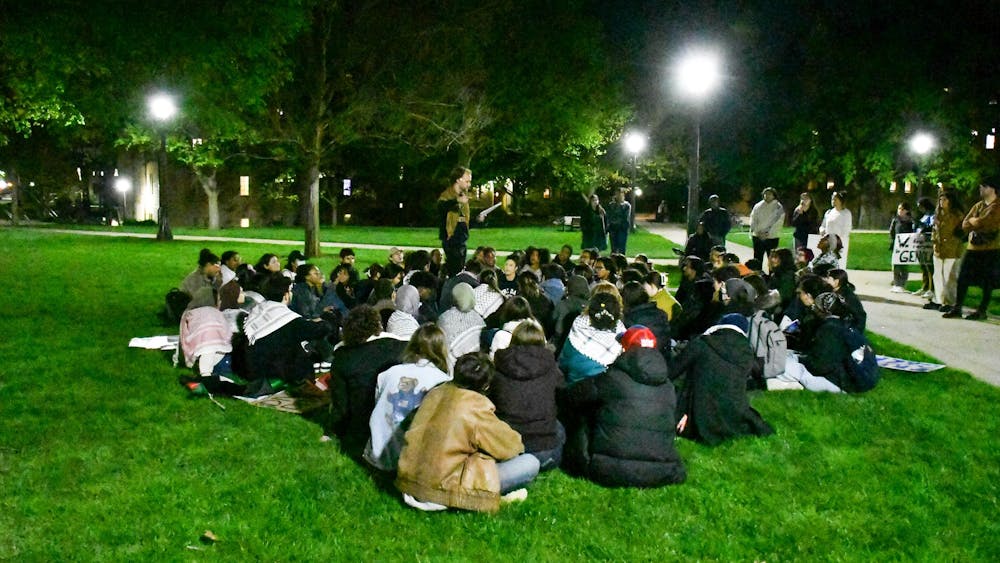Few athletes have dominated their sport like Monica Seles dominated women’s tennis. During the height of her career, she was considered virtually unbeatable. In 1990, at the age of only 16, Seles became the youngest ever champion of the French Open. In just a two-year period (from early 1991 to early 1993), Seles amassed a whopping 22 singles titles and made it to the final of 33 of the 34 tournaments she entered. Even more impressive, she lost only a single match in a grand slam tournament, winning six of the seven majors in which she competed. By the age of only 19, Seles had collected eight Grand Slam titles and secured the world No. 1 ranking with an iron fist.
The only player that could remotely compete with Seles was Steffi Graf. Prior to Seles’s reign, Graf was the undisputed world No. 1. In the years leading up to Seles’s arrival, Graf collected nine grand slam titles and achieved the unprecedented “Golden Slam” in 1988 by winning all four major titles and the gold medal at the Summer Olympics. Not unlike Seles, Graf’s early career was characterized by unstoppable winning streaks and virtual invincibility. Graf had established a permanent residence at the top of the Women’s Tennis Association (WTA) rankings until Seles arrived. Seles’ stretch of dominance brought Graf’s supremacy to an end. As Pam Shriver said, “[Seles] was dominating Steffi Graf, who, prior to Seles, dominated everyone else.” Can you imagine the frustration Graf must have experienced after being heralded as a contender for the greatest tennis player of all time only to be stopped by a 16 year old? That’s how incredible Seles was.
To illustrate just how ridiculously impressive Seles’ early career was, consider this: In Steffi Graf’s first 14 Grand Slam tournaments, she won only one. In Seles’ first 14 attempts, she won eight. At 19 years old, Serena Williams (Heard of her?) had won only a single Grand Slam singles title. Serena didn’t win her eighth Grand Slam title until she was 25. Still not impressed? How about this: Rafael Nadal and Roger Federer also didn’t win their eighth major title until the age of 25. Novak Djokovic was even older — it took him until age 27 to capture his eighth Grand Slam. By the age at which Seles had captured her eighth major, Martina Navratilova and Chris Evert hadn’t won even a single Grand Slam title. I provide these contextual comparisons to demonstrate that Seles wasn’t just another tennis superstar; she wasn’t just the best player of her generation. Seles was the champion of a century.
That all came to a screeching halt on April 30, 1993. During a match in Hamburg, Germany, Seles was stabbed in the back with a nine-inch boning knife by a spectator. The linked video captures the aftermath of the stabbing. As Seles has described in interviews, she didn’t immediately realize that she had been stabbed. In the video, you can see the look of utter horror creep across Seles’ face as she realizes what happened. It is very hard to watch.
The man who stabbed Seles was Günter Parche, an obsessive fan of Steffi Graf. While being interrogated, Parche admitted that the stabbing was motivated by his desire for Graf to return to the world first ranked. Parche got exactly what he wanted. The stabbing sidelined Seles from professional tennis for over two years — a period during which she should have been collecting Grand Slams like Easter eggs — and, predictably, Graf immediately shot back up to the top of the rankings in Seles’ absence.
The physical damage left by the knife required surgery to repair the muscles and tissue near the shoulder where the knife entered her back. Fortunately, the knife missed her spine and other major organs. Physicians told Seles if she had not bent forward right before being stabbed, she would have most likely been paralyzed. Due to the nature of the wound, Seles’ surgeons predicted she could make a full recovery if she followed their instructions. However, the pain in her shoulder lasted months beyond the healing of the wound. Though Seles experienced severe physical trauma at the hands of her attacker, what she experienced after the attack cut far deeper than Parche’s knife.
Following the attack, Seles entered a therapy program and was diagnosed with post-traumatic stress disorder. By the winter following her attack, Seles had fallen into a deep state of depression and began experiencing uncontrollable crying episodes. Eventually, Seles developed binge eating disorder as a coping mechanism. As Seles describes in her autobiography (one of the greatest books I have ever read – seriously), this eating disorder would become her most persistent obstacle in returning to her former glory.
While Seles was recovering from the physical and emotional impacts of the attack, the WTA held a meeting in Rome with the other top 25 WTA players. The meeting was held in order to decide whether Seles’ No. 1 ranking should be frozen while she recovered from the stabbing. Aside from one player who abstained, the entire body of players collectively voted against Seles. Peter Bodo’s response says it all: “The plain fact is that Monica Seles got stabbed in the back twice: first by Parche and then by tennis.” In the wake of the most violent moment in the history of their sport, the professional tennis community responded by saying, “If Seles got stabbed, that’s her problem! Now can I have her locker at Wimbledon?” The German government decided to join the WTA and bury one more massive metaphorical knife in her back by giving Parche a two-year suspended sentence. That’s right — the man who stabbed Monica Seles didn’t spend a single day in prison.
Despite these unimaginable obstacles, Seles managed to make a successful return to professional tennis where she won her ninth (and final) Grand Slam title, remained a staple in the top 10 rankings and was even ranked No. 1 in the world for a short period of time. Even in the direst of circumstances, Seles triumphed. However, she never returned to her prime form. In 2003, Seles played her last professional match and eventually retired in 2008.
Seles was on her way to becoming the most successful tennis player of all time. She had outpaced every legend that came before her and every champion since. If Serena Williams can win 23 (and counting) Grand Slam titles at just a fraction of the pace Monica Seles demonstrated prior to her stabbing, imagine what Seles’ career could have been. There was every indication that Seles’ dominance would have continued for years. Yet, even among tennis enthusiasts, Seles is never mentioned as a contender for the greatest player of all time. Not coincidentally, Graf is almost always a serious candidate. Don’t let Parche get what he wanted. The next time you get into an argument about the all-time tennis greats, make the argument for Monica Seles. She deserves it.













